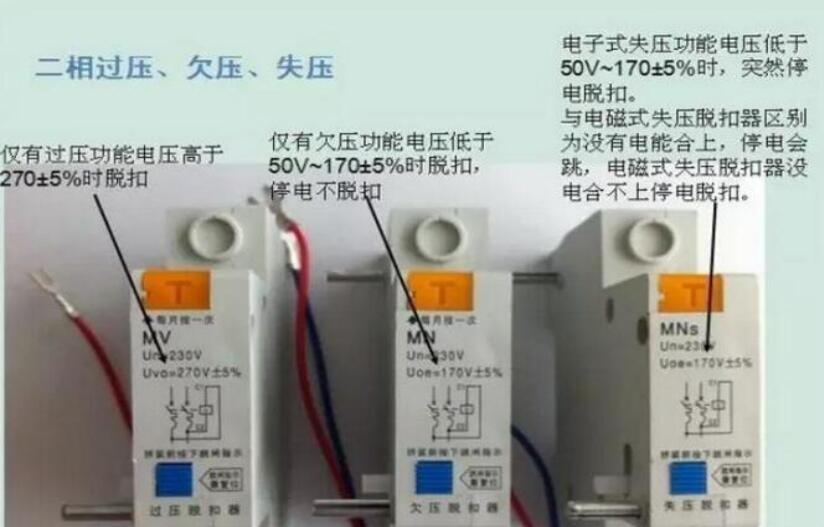The trip unit is a component used to receive signals in a low-voltage circuit breaker. If there is an abnormal situation in the circuit or a signal is sent by the operator or the relay protection device, the buckle will switch off the circuit through the transmission element according to the signal. The releases of low-voltage circuit breakers generally include overcurrent releases, thermal releases, voltage-loss releases, and shunt releases.
When the low-voltage circuit breaker is put into operation, the operating handle has closed the main contact, the free trip mechanism locks the main contact in the closed position, and various trip units enter the operating state.

The electromagnetic trip unit is connected in series with the protected circuit. When normal current passes through the line, the electromagnetic force generated by the electromagnet is less than the pulling force of the reaction force spring. The armature cannot be attracted by the electromagnet, and the circuit breaker operates normally. When a short circuit fault occurs in the line, the current exceeds several times the normal current, and the electromagnetic force generated by the electromagnet is greater than the force of the reaction force spring. The armature is attracted by the electromagnet and the free trip mechanism is pushed through the transmission mechanism to release the main contact. The main contact is separated and cut off the circuit under the action of the opening spring to play a short-circuit protection function.

The thermal trip unit is connected in series with the protected circuit. When normal current passes through the line, the heating element heats up the bimetallic strip to bend to a certain extent (just touches the transmission mechanism) and reaches a dynamic equilibrium state, and the bimetallic strip no longer continues to bend. If an overload occurs, the current in the line increases, and the bimetallic strip will continue to bend. The free trip mechanism is pushed by the transmission mechanism to release the main contact, the main contact is separated under the action of the opening spring, and the circuit is cut off to play the role of overload protection.

The loss-of-voltage release is connected in parallel with the power supply of the circuit breaker, which can play a role in under-voltage and zero-voltage protection. When the power supply voltage is normal, pull the operating handle, the normally open auxiliary contact of the circuit breaker is closed, the electromagnet is energized, the armature is attracted by the electromagnet, and the free trip mechanism can lock the main contact in the closing position. The circuit breaker is put into operation. When the power supply side is out of power or the power supply voltage is too low, the electromagnetic force generated by the electromagnet is not enough to overcome the tension of the reaction force spring. The armature is pulled up, and the free trip mechanism is pushed through the transmission mechanism to trip the circuit breaker, which plays a role of under-voltage and zero-voltage protection.
When the power supply voltage is 75% or 105% of the rated voltage, the loss-of-voltage release guarantees the closing and closing of the circuit breaker. When the power supply voltage is lower than 40% of the rated voltage, the loss-of-voltage release ensures that the circuit breaker will be disconnected. Generally, the normally closed button connected in series with the solenoid loop of the loss-of-voltage release can be used for opening operation.

Shunt release is used for remote operation of low-voltage circuit breaker opening control. Its electromagnetic coil is connected in parallel with the power supply side of the low-voltage circuit breaker. When the opening operation is required, press the normally open button to make the electromagnet of the shunt release electrically attract the armature, and the free trip mechanism is pushed through the transmission mechanism to trip the low-voltage circuit breaker.
When two or more releases are installed on a low-voltage circuit breaker at the same time, the low-voltage circuit breaker is equipped with a double release.

Shenzhen Scodeno Technology Co.,Ltd , https://www.scodenonet.com